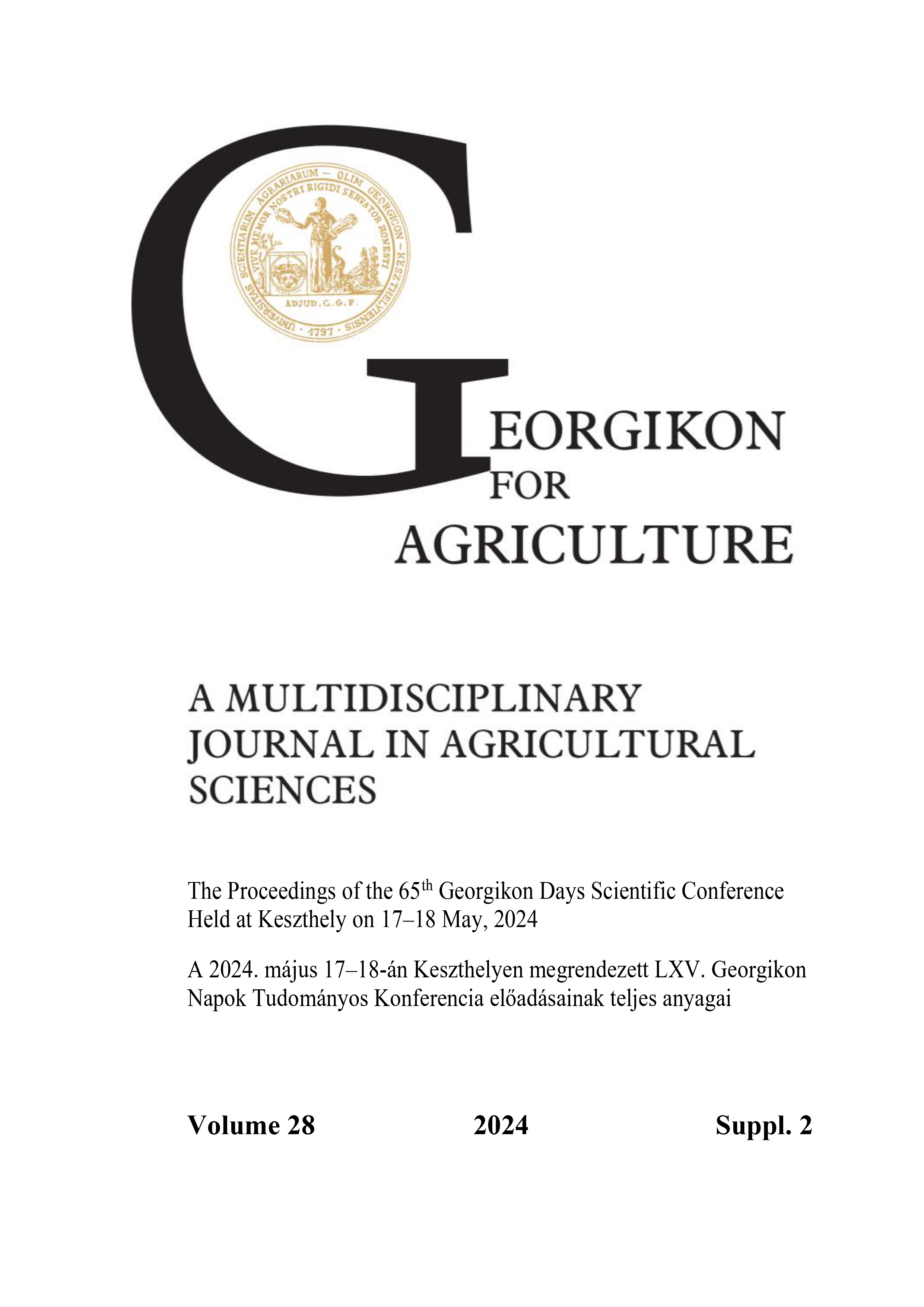Csonthéjasok európai sárgaság fitoplazmájának (ca. Phytoplasma prunorum) és vektorának, a szilvalevélbolhának (Cacopsylla pruni) vizsgálata magyarországi kajsziültetvényekben
Kulcsszavak:
kajszibarack, csonthéjasok európai sárgasága, fitoplazma, Phytoplasma prunorum, szilva levélbolha, Cacopsylla pruniAbsztrakt
A kajszibarack termesztése a legnehezebb növénytermesztési és növényvédelmi feladatok egyike. A számos kockázatos termesztési tényező (például késői termőre fordulás, nagy kézi munkaerőigény, a gyümölcs rövid eltarthatósága) mellett jelentős növényvédelmi problémákkal (főleg bakteriális és gombás fertőzések) is meg kell küzdeni. Mára ezek sorát bővíti a Ca. Phytoplasma prunorum. A klorózissal, lombvesztéssel, később részleges, majd teljes pusztulással járó fitoplazmás betegség megismerése a közelmúltban teljesedett ki, de az ellene való biztos védekezés még a jövő feladata, amit már telepítés előtt kellene elkezdeni. Ehhez olyan szintű országos vizsgálatra és ellenőrzésre lenne szükség, ami biztosítaná a fitoplazmamentes szaporítóanyag létrehozását. A látványos károkat nem okozó vektora, a szilva levélbolha elleni védekezés pedig csak az egyik szegmense a szükséges védekezési megoldásoknak, amit számos tényező nehezít. A természetes táplálékforrásai, mint a vad Prunus fajok kozmopoliták, fitoplazmával látható tünetek produkálása nélkül képesek fertőződni. A levélbolha rövid időt tölt a vad és termesztett Prunus fajokon, de ez alatt is képes átadni a benne perzisztens módon inkubálódó fitoplazmát. A fitoplazma fertőzöttség felméréséhez a Nucleospin Plant II. kit, a nyers kivonat készítésére alkalmas Plant Material Lysis kit és a fitoplazmák növényi kivonatban való kimutatására használt LAMP vizsgálat mind gyökérből, mind levélből, mind pedig rovarból gyors és értékelhető eredményt adott. A szemrevételezéssel történő fertőzöttség megállapítása és a tényleges fertőzöttség között nem egyértelmű az összefüggés, mivel egyes pusztuló egyedekből, a fák súlyos tünetei ellenére sem volt kimutatható a fitoplazma. A védekezés kulcsa az ellenőrzött (fitoplazmamentes) szaporítóanyag, a korán betelepülő vektorok elleni, előrejelzésre alapozott védekezés, valamint a beteg fák és az alanysarjak eltávolítása. Ebben a tanulmányban kiemelten a levélbolhával kapcsolatos eredményeket ismertetjük.
Hivatkozások
Bodnár, D., Koczor, S., Tarcali, G., Tóth, M., Ott, G. P. and Tholt, G. 2022. Cacopsylla pruni (Hemiptera, Psyllidae) in an apricot orchard is more attracted to white sticky traps dependent on host phenology. Biodiversity data Journal. 10 e93612. https://doi.org/10.3897/BDJ.10.e93612
Bozsik A. 2014. Gondolatok a csonthéjasok fitoplazmás pusztulásáról – rovarász szemmel. Agrártudományi közlemények (különszám). 62 30–34.
Carraro, L., Osler, R., Loi, N., Ermacora, P. and Refatti, E. 1998. Transmission of European stone fruit yellows phytoplasma by Cacopsylla pruni. Journal of Plant Pathology. 80 233–239.
Fialova, R., Navratil, M., Valova, P., Lauterer, P., Kocourek, F. and Poncarova-Vorackova, Z. 2004. Epidemiology of European Stone Fruit Yellows phytoplasma in the Czech Republic. Acta Horticulturae. 657 483–487. https://doi.org/10.17660/ActaHortic.2004.657.78
Jarausch, W., Eyquard, J. P., Lansac, M., Mohns M. and Dosba, F. 2000. Susceptibility and tolerance of new French Prunus domestica cultivars to European stone fruit yellows phytoplasmas. Journal of Phytopathology. 148 (7-8) 489–493. https://doi.org/10.1046/j.1439-0434.2000.00535.x
Lepres L. A., Mergenthaler E., Viczián O. és Tóth F. 2018. A szilva levélbolha (Cacopsylla pruni Scopoli, 1763) jelenlétének felmérése és „Candidatus Pytoplasma prunorum” kórokozóval való fertőzöttségének vizsgálata egy heves megyei kajszibarack ültetvényben. Növényvédelem. 54 (5) 197–203.
Ripka, G. 2008. Checklist of the Psylloidea of Hungary (Hemiptera: Sternorrhyncha). Acta Phytopathologica et Entomologica Hungarica. 43 (1) 121–142. https://doi.org/10.1556/APhyt.43.2008.1.14
Ripka G. 2010. Levélbolhák, Agroinform Kiadó, Budapest.
Letöltések
Megjelent
Folyóirat szám
Rovat
License
Copyright (c) 2024 Attila Galovics, Zsuzsanna Nagyné Galbács, Éva Várallyay, Balázs Keresztes

This work is licensed under a Creative Commons Attribution-NonCommercial-NoDerivatives 4.0 International License.
The articel is under the Creative Commons 4.0 standard licenc: CC-BY-NC-ND-4.0. Under the following terms: You must give appropriate credit, provide a link to the license, and indicate if changes were made. You may do so in any reasonable manner, but not in any way that suggests the licensor endorses you or your use. You may not use the material for commercial purposes. If you remix, transform, or build upon the material, you may not distribute the modified material. You may not apply legal terms or technological measures that legally restrict others from doing anything the license permits.




 Georgikon for Agriculture
Georgikon for Agriculture